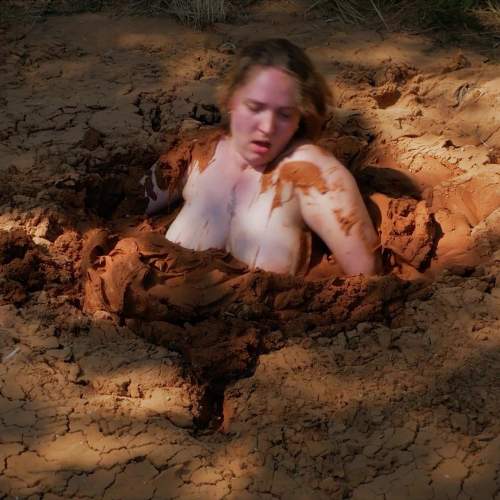|
|
|||
| forums: groups: | |||
|
"Mud locations on east coast Australia"
Hey Guys unfortunately I haven't had much luck on mud locations. I've search google earth for muddy creeks, I end up going for a look and walking for ages only to find it was only dark sand.
There are some places but there close to houses or high traffic areas.
If you don't mind sharing locations would be much appreciated, you
Can dm me I live in NSW
Would love some nice tidal mud. Quarry would be nice but they scare me with cameras
There are some places but there close to houses or high traffic areas.
If you don't mind sharing locations would be much appreciated, you
Can dm me I live in NSW
Would love some nice tidal mud. Quarry would be nice but they scare me with cameras
The beach at langlang low tide is really good mud and deep. There are showers there too for a wash off but it is in view of the caravan park. Ok if you like clothes muddying sessions
Sorry to hear of the bad luck! I've been faked out on quite a few trips, too. I can't speak specifically for 'down under', but here are a couple of tips that can help on google:
Generally good mud will be:
- At the 'headwaters' of lakes. The point where a river widens out and becomes a lake. (River delta) This causes the water flow to slow down and all the silt falls out creating mud flats.
- Side channels of rivers or cut off channels. Especially if the side channel has a narrow entrance and a wide 'body' - almost forming a mini pond. Sometimes oxbow lakes, especially if one end is already cut off. Again, water goes in, flow slows down, silt drops out and makes great mud!
- Places where the river is wide and flat and the land is also wide / flat.
- In areas where adjacent clay / mud can erode down into a wide channel. Farmland, freshly tilled fields, possibly freshly burned areas.
- Some of these requirements can be skipped if you have a lake or river which is suddenly running several feet (1m+) lower than average.... say a large water release was made for irrigation or water supply down river. That can suddenly uncover a lot of good mud - especially in conjunction with the points mentioned above.
- Of course any tidal mud flats if near a coast and the geography is favorable.
Avoid locations:
- Wide, strong flowing main river channels - these tend to be sand/gravel bars
- Any area which is predominantly sand, gravel / rock type soil around the river....then it's likely to be sand, gravel / rock in the river, too.
- Main channel lakes, etc also tends to be a lot of sand/gravel.
- Steep valleys with narrow channels at the bottom. Likely any good mud eroded eons ago.
Basically look for locations where the river can pool up, slow down in flow and let the silt fall out into mud flats. If it's fast water / main channel, then all the silt is carried away and you're left with sand/rock.
Also try to estimate the water level when the image was taken in relation to what you currently have - or expect in the near future. If the sat image was during a spring flood, that might hide a lot of good mud available in the summer. If it was during a summer drought, you might not be able to get to that mud until the next big drought.
Good Luck!
Generally good mud will be:
- At the 'headwaters' of lakes. The point where a river widens out and becomes a lake. (River delta) This causes the water flow to slow down and all the silt falls out creating mud flats.
- Side channels of rivers or cut off channels. Especially if the side channel has a narrow entrance and a wide 'body' - almost forming a mini pond. Sometimes oxbow lakes, especially if one end is already cut off. Again, water goes in, flow slows down, silt drops out and makes great mud!
- Places where the river is wide and flat and the land is also wide / flat.
- In areas where adjacent clay / mud can erode down into a wide channel. Farmland, freshly tilled fields, possibly freshly burned areas.
- Some of these requirements can be skipped if you have a lake or river which is suddenly running several feet (1m+) lower than average.... say a large water release was made for irrigation or water supply down river. That can suddenly uncover a lot of good mud - especially in conjunction with the points mentioned above.
- Of course any tidal mud flats if near a coast and the geography is favorable.
Avoid locations:
- Wide, strong flowing main river channels - these tend to be sand/gravel bars
- Any area which is predominantly sand, gravel / rock type soil around the river....then it's likely to be sand, gravel / rock in the river, too.
- Main channel lakes, etc also tends to be a lot of sand/gravel.
- Steep valleys with narrow channels at the bottom. Likely any good mud eroded eons ago.
Basically look for locations where the river can pool up, slow down in flow and let the silt fall out into mud flats. If it's fast water / main channel, then all the silt is carried away and you're left with sand/rock.
Also try to estimate the water level when the image was taken in relation to what you currently have - or expect in the near future. If the sat image was during a spring flood, that might hide a lot of good mud available in the summer. If it was during a summer drought, you might not be able to get to that mud until the next big drought.
Good Luck!
mud_adventures said: Sorry to hear of the bad luck! I've been faked out on quite a few trips, too. I can't speak specifically for 'down under', but here are a couple of tips that can help on google:
Generally good mud will be:
- At the 'headwaters' of lakes. The point where a river widens out and becomes a lake. (River delta) This causes the water flow to slow down and all the silt falls out creating mud flats.
- Side channels of rivers or cut off channels. Especially if the side channel has a narrow entrance and a wide 'body' - almost forming a mini pond. Sometimes oxbow lakes, especially if one end is already cut off. Again, water goes in, flow slows down, silt drops out and makes great mud!
- Places where the river is wide and flat and the land is also wide / flat.
- In areas where adjacent clay / mud can erode down into a wide channel. Farmland, freshly tilled fields, possibly freshly burned areas.
- Some of these requirements can be skipped if you have a lake or river which is suddenly running several feet (1m+) lower than average.... say a large water release was made for irrigation or water supply down river. That can suddenly uncover a lot of good mud - especially in conjunction with the points mentioned above.
- Of course any tidal mud flats if near a coast and the geography is favorable.
Avoid locations:
- Wide, strong flowing main river channels - these tend to be sand/gravel bars
- Any area which is predominantly sand, gravel / rock type soil around the river....then it's likely to be sand, gravel / rock in the river, too.
- Main channel lakes, etc also tends to be a lot of sand/gravel.
- Steep valleys with narrow channels at the bottom. Likely any good mud eroded eons ago.
Basically look for locations where the river can pool up, slow down in flow and let the silt fall out into mud flats. If it's fast water / main channel, then all the silt is carried away and you're left with sand/rock.
Also try to estimate the water level when the image was taken in relation to what you currently have - or expect in the near future. If the sat image was during a spring flood, that might hide a lot of good mud available in the summer. If it was during a summer drought, you might not be able to get to that mud until the next big drought.
Good Luck!
Generally good mud will be:
- At the 'headwaters' of lakes. The point where a river widens out and becomes a lake. (River delta) This causes the water flow to slow down and all the silt falls out creating mud flats.
- Side channels of rivers or cut off channels. Especially if the side channel has a narrow entrance and a wide 'body' - almost forming a mini pond. Sometimes oxbow lakes, especially if one end is already cut off. Again, water goes in, flow slows down, silt drops out and makes great mud!
- Places where the river is wide and flat and the land is also wide / flat.
- In areas where adjacent clay / mud can erode down into a wide channel. Farmland, freshly tilled fields, possibly freshly burned areas.
- Some of these requirements can be skipped if you have a lake or river which is suddenly running several feet (1m+) lower than average.... say a large water release was made for irrigation or water supply down river. That can suddenly uncover a lot of good mud - especially in conjunction with the points mentioned above.
- Of course any tidal mud flats if near a coast and the geography is favorable.
Avoid locations:
- Wide, strong flowing main river channels - these tend to be sand/gravel bars
- Any area which is predominantly sand, gravel / rock type soil around the river....then it's likely to be sand, gravel / rock in the river, too.
- Main channel lakes, etc also tends to be a lot of sand/gravel.
- Steep valleys with narrow channels at the bottom. Likely any good mud eroded eons ago.
Basically look for locations where the river can pool up, slow down in flow and let the silt fall out into mud flats. If it's fast water / main channel, then all the silt is carried away and you're left with sand/rock.
Also try to estimate the water level when the image was taken in relation to what you currently have - or expect in the near future. If the sat image was during a spring flood, that might hide a lot of good mud available in the summer. If it was during a summer drought, you might not be able to get to that mud until the next big drought.
Good Luck!
Thanks for your tips that actually makes sense. Sounds like your really into it and you have found some great areas.
Sponsors
Sponsors

Design & Code ©1998-2025 Loverbuns, LLC 18 U.S.C. 2257 Record-Keeping Requirements Compliance Statement
Epoch Billing Support Log In





 Love you, too
Love you, too


























